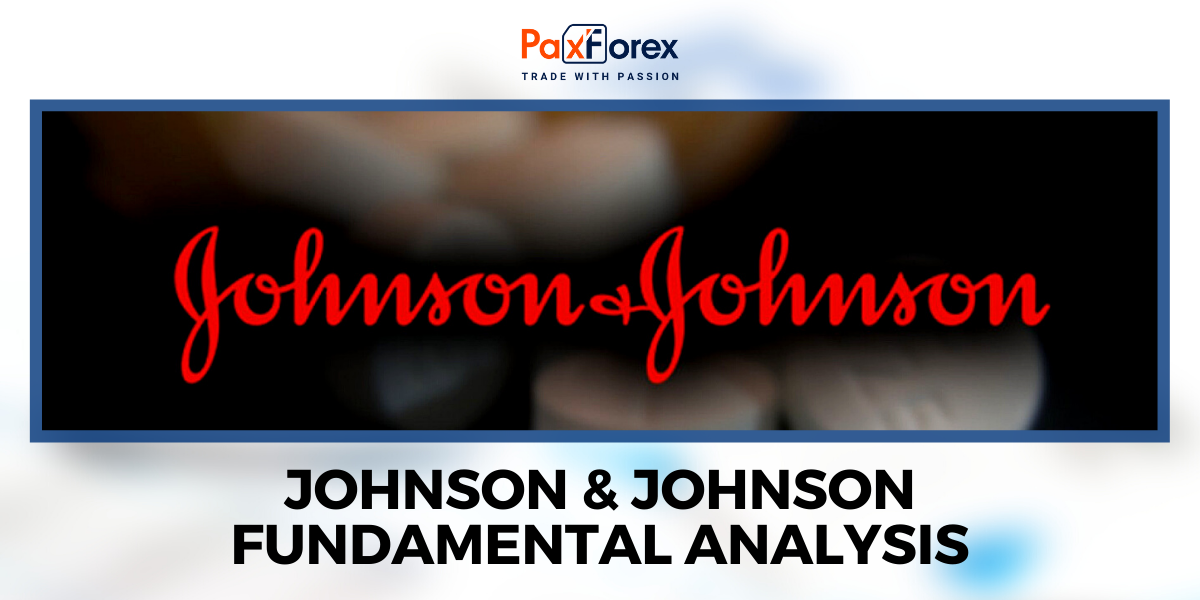
Source: PaxForex Premium Analytics Portal, Fundamental Insight
The past year has brought significant changes for Johnson & Johnson. In August, the company underwent a major transformation by spinning off its consumer health division, giving rise to a new entity named Kenvue.
This separation, which resulted in Kenvue taking charge of products like Listerine, Q-tips, and Tylenol, has raised concerns among investors. Many have wondered whether Johnson & Johnson, renowned for its consistent dividend increases, might halt this trend.
However, in a recent development, Johnson & Johnson issued its first quarterly earnings report following the Kenvue spinoff, and the results surpassed expectations. Let's take a closer look at this leaner version of the healthcare giant to determine if it's a suitable addition to your income-generating portfolio.
Despite the significant consumer health division separation, potentially one of the most profound changes in the company's 137-year history, it hasn't hindered the company's ability to outperform projections. Total sales surged by 6.8% year over year, reaching $21.35 billion, which was $310 million higher than the forecasts of Wall Street analysts. On the earnings front, adjusted earnings reached $2.66 per share, exceeding consensus estimates by $0.14.
In a noteworthy development, Johnson & Johnson not only outperformed Wall Street expectations but also raised its own guidance concerning full-year sales and earnings. The company anticipates reporting a 7.7% increase in total sales within the midpoint of its guided range. Additionally, adjusted earnings per share (EPS) are expected to rise by 13% within the midpoint of the management's guided range.
In April, Johnson & Johnson marked a significant milestone by raising its dividend payout for the 61st consecutive year, signaling a strong commitment to its shareholders. The outlook for future dividend increases appears promising, with adjusted earnings expected to reach $10.10 per share, comfortably supporting the current dividend payout of $4.76 per share.
Looking ahead to 2023, management's estimates continue to be optimistic, suggesting the likelihood of yet another dividend increase in 2024. However, it's worth noting that potential challenges lie on the horizon that investors should be mindful of.
Key to Johnson & Johnson's growth is Stelara, a biologic drug used in the treatment of psoriasis and bowel inflammation. Third-quarter sales exhibited robust growth, surging by 16.9% year over year to an annualized $11.5 billion. But there's a potential stumbling block: Stelara's market exclusivity in the United States lost its patent protection in September. Although Johnson & Johnson struck an agreement with Amgen to delay the launch of a biosimilar version of Stelara until January 2025, it's a sign that competition is looming.
Before the biosimilar competition heats up, Johnson & Johnson may need to lower prices for Stelara and two other top-selling products when negotiating with Medicare. Stelara, Xarelto (a blood thinner), and Imbruvica (a blood cancer drug sold in partnership with AbbVie) are all on the list for new drug-price negotiations next year.
Currently, Johnson & Johnson offers investors a 3% yield, with the potential for consistent dividend raises throughout their retirement years. However, whether it's the right stock to buy at this moment depends on your investment horizon.
Notably, with two-year treasury notes providing a guaranteed 5.2% yield, the 3% yield offered by J&J stock might not appear highly attractive unless you have a longer investment horizon. The loss of exclusivity for Stelara and ongoing negotiations with Medicare could potentially moderate the pace of future dividend increases.
In summary, Johnson & Johnson remains an appealing stock for investors with a considerable amount of time to allow their dividends to grow before relying on them for daily expenses. However, if you're already in retirement or nearing it, you may want to explore other dividend stocks that better align with your current financial objectives.
As long as the price is above 150.00, follow the recommendations below:
- Time frame: D1
- Recommendation: long position
- Entry point: 152.22
- Take Profit 1: 157.00
- Take Profit 2: 162.00
Alternative scenario:
If the 150.00 level is broken-down, follow the recommendations below:
- Time frame: D1
- Recommendation: short position
- Entry point: 150.00
- Take Profit 1: 145.00
- Take-profit 2: 141.00













